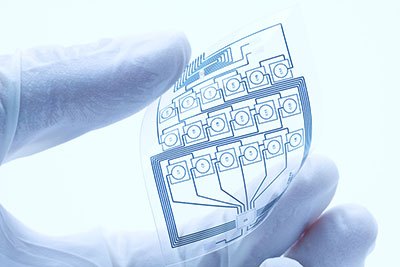Flexible PCB is now more popular than ever, and that is the trend that will continue in the coming years.
If you would like to try using a flex PCB for your application, it is vital to know more about the primary materials for flexible boards.
It is why we prepared a detailed guide that will enable you to find out everything about flexible PCBs and the materials used in the assembly process!
Contents
- 1 1. Learn Some of the Benefits of Flexible PCB
- 2 2. The Most Common Substrate Materials for Flexible Boards
- 3 3. Two-Layer PI Substrate Material, How Much do You Know?
- 4 4. The Development of Liquid Crystal Polymer and Halogen-Free Substrate
- 5 5. Other Flexible PCB Materials, How Much do You Know
- 6 6. Flexible PCB—The Difference Between Flexible and Flex-Rigid PCB Materials
- 7 7. Flexible PCB—How to Choose the Right Materials for Your PCB
- 8 Conclusion
1. Learn Some of the Benefits of Flexible PCB
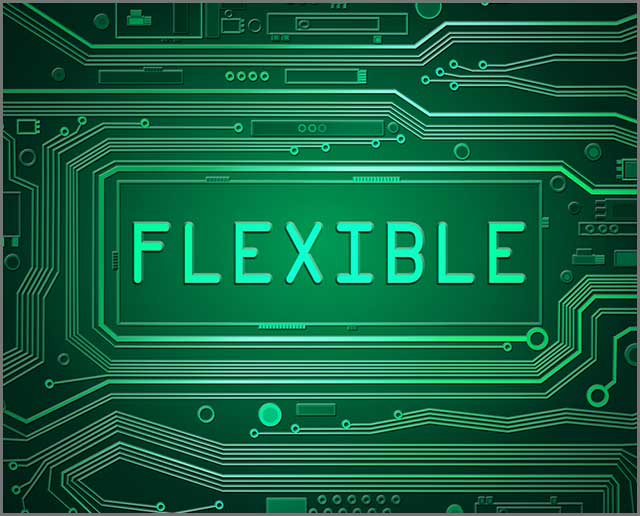
If you look at the market share of flexible printed circuit boards, you will discover it goes up every year. That is because they offer some clear advantages compared to conventional PCBs and even flex-rigid boards.
If you are wondering when you should use flexible PCBs, here are some situations when you should consider them:
- You have limited space available for your printed circuit board.
- The location where you plan to fit the PCB is specific, and it requires bendy materials.
- The board to be as light as possible.
- Looking for an extremely durable board capable of withstanding severe conditions
You can already assume the advantages of flexible boards from the above list. These PCBs use bendy materials, which makes them manageable. Additionally, they try to remain as light and compact as possible, which increases the board’s versatility.
The crucial thing to consider is that the Performance of any printed circuit board depends on the materials that the users choose when designing it. That is why it is essential to choose carefully and make the right choices for your application.
2. The Most Common Substrate Materials for Flexible Boards
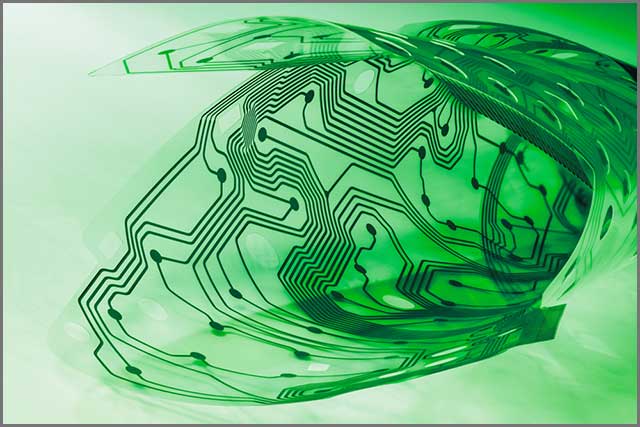
- When it comes to the most common base materials for flexible PCBs.
- We can mention three different materials-
- PTFE (polytetrafluoroethylene)
- PI (polyimide)
- PEEK (polyether ether ketone)
2.1. PolytetraFluoroethylene
Those who decide to use PTFE for their application look for a combination of low dissipation and high-temperature stability. That is why you can use these materials in antennas, vehicle cruise control, power amplifiers, and even guidance telemetry used in the aerospace industry. You may also know this as the non-stick coating used in pans.
2.2. Polyimide
It seems to be the most frequently used material for flexible PCBs at the moment. Polyimide is a relatively affordable material with decent Performance. It offers excellent chemical resistance, a generous temperature range, and stable electrical properties.
You can find this material in flexible boards used in cameras, calculators, instrument panels, and entertainment devices.
2.3. Polyether Ether Ketone
The majority know this material under the name PEEK. Base based only on PEEK, but it features impressive resistance to radiation and chemicals. It also handles extreme temperatures well, considering that its melting point is set very high.
You will find his material in medical applications, such as gamma-ray devices and X-ray machines. It is also present in aircraft electronic systems.
Apart from the base substrate material, you also need to choose components for cladding. That is the cover layer of your printed circuit board. You apply it to the surface to provide an insulating effect and protect the PCB, boosting its performance and reliability.
If we are talking about FCCL (flexible copper clad laminate), most manufacturers use a specific PI thermosetting resin. Its uniqueness lies in the fact that it won’t reach temperatures to soften or start flowing. However, it stands out from other thermosetting resins because it handles the thermal polymerization process differently. The difference is that it keeps its elasticity and flexibility.
Additionally, polyimide has impressive electrical capabilities and substantial thermal resistance. However, we should note there is room for improvement in enhancing tear strength and reducing humidity absorption. The usual intake is around 1.6%, but an improved PI film can reduce this percentage to 0.7%.
3. Two-Layer PI Substrate Material, How Much do You Know?
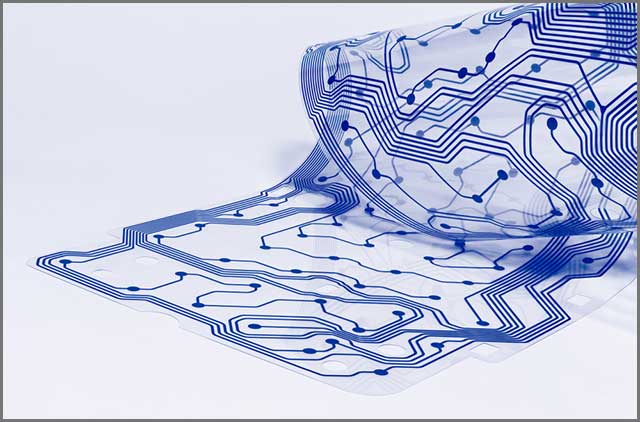
For a long time, the usual approach was using three layers in flexible CCLs. Those layers were copper foil, adhesive, and polyimide. However, the industry experts identified that adhesive affects board performance negatively. The dimensional stability and electrical Performance are particularly affected, so the industry started looking for an alternative solution.
The solution was to design a two-layer CCL that won’t include adhesive. It turned out that it was a good move because the two-layer approach improved heat resistance and dimensional stability. The only downside is the higher cost due to the specifics of the manufacturing process.
The manufacturer uses three different approaches for two-layer FCCLs, including
- Film coating.
- Electroplating.
- Lamination.
If you plan on using double-sided PCBs, you can go with lamination. Electroplating is quite affordable, and the film coating is an excellent choice for mass production.
4. The Development of Liquid Crystal Polymer and Halogen-Free Substrate
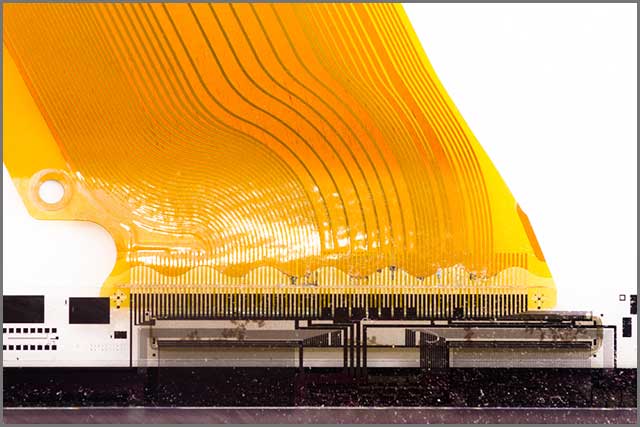
Polyimide is widespread as a substrate material, but it has certain disadvantages. That is why the industry experts implemented liquid crystal polymer. Copper foil goes over a thermoplastic LCP film, and then we get CCL via the process of hot pressing. The humidity absorption is 0.04%, and the CCL is suitable to use in digital circuits with a high frequency.
The great thing about liquid crystal polymer is that it is recyclable. That means the PCB or any other industry can use it more than once.
4.1. Flexible PCB—Why PCB Manufacturers Use Halogen-Free Material?
It was in 2003 when the European Union banned the processing of electronic equipment with different hazardous materials. As a result, manufacturers now have to follow the requirement to keep their PCBs halogen-free.
That is something you should consider if you plan to sell your application in the EU. Apart from being free from halogen, it is also vital to secure proper flame resistance properties of the printed circuit board.
5. Other Flexible PCB Materials, How Much do You Know
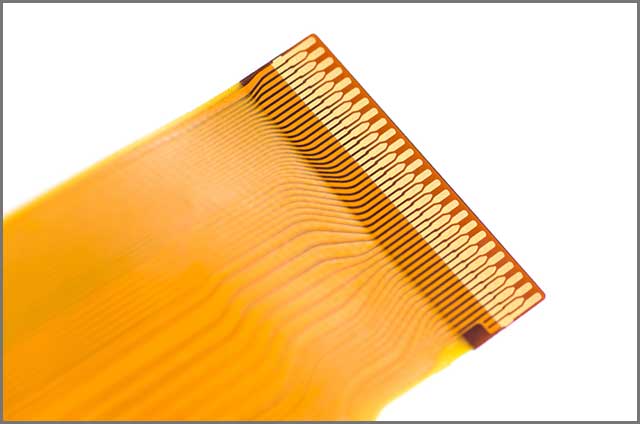
If we discuss flexible PCBs, we need to mention conducting materials, too. It shouldn’t come as a surprise that copper foil and copper are the natural material of choice. However, some manufacturers also resort to alloys, such as nickel, aluminum, silver, gold, etc.
You can also find two types of copper foil in the market. The first is RA (rolled and annealed), and the second is ED (electro deposit) copper foil. RA foil has a flat and even structure thanks to the column array shape. However, the latter cannot be subjected to etching processing or roughening. On the other hand, ED’s characteristic is a fish scale, ensuring optimal toughness and smooth foil.
If you are looking for the highest level of flexibility, you should go with RA foil. However, high-density boards often use ED foil.
In the PCB manufacturing process, the technicians will use the conductive silver paste as the printed conductive layer. The reason why they choose this material is its flexibility, reliable connection, and relatively low resistance. Additionally, the entire process is relatively quick, which shortens the time to add the layer.
Manufacturers also use a photosensitive polyimide coating. It has far better features than the standard ones and can accommodate extra density and dimensional stability.
6. Flexible PCB—The Difference Between Flexible and Flex-Rigid PCB Materials
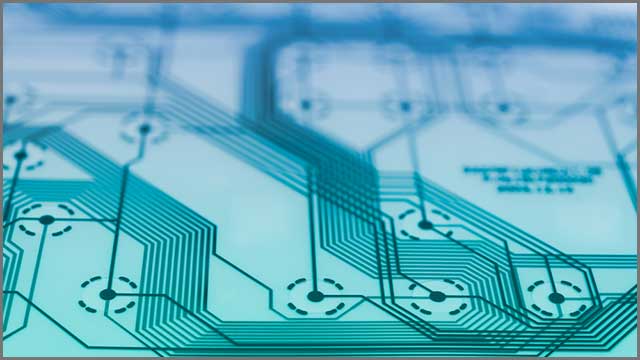
If you don’t want a board that will be completely flexible, you can also go with a flex-rigid solution. In that case, the materials will be somewhat different. In most cases, you can attach a flexible polyimide layer to a rigid sheet.
The most common material choices are:
• Flexible PCB—RO3000 – it is a PTFE composite filled with ceramics. The material is stable both electronically and mechanically, which accommodates multi-layer PCBs. Potential applications include direct broadcast satellites, remote meter readers, and automotive radar.
• RO4000 – it is a material that is relatively affordable and delivers consistent performance at high frequencies. The dimensional stability is also admirable, which makes it suitable for dielectric boards that have multiple layers. Essentially, the material is a hydrocarbon ceramic laminate.
7. Flexible PCB—How to Choose the Right Materials for Your PCB
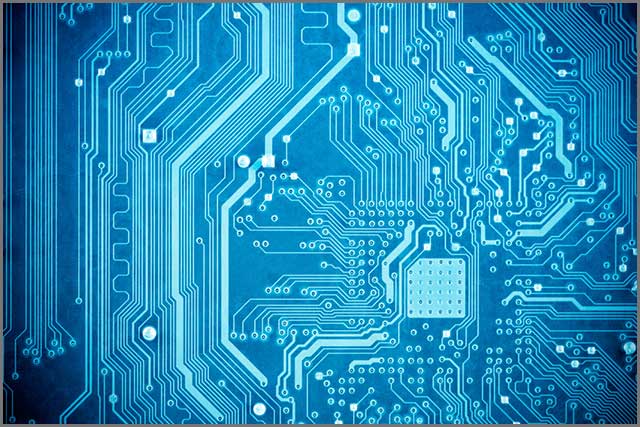
Here are some factors to consider when choosing the materials for your printed circuit board:
• Performance – no matter what, this should be your primary priority. If you want your product to meet the expectations, you want a reliable board with consistent Performance
• Flexible PCB—Space – if you are looking for a flexible PCB, the chances are you have limited space for your board. That is why you should look for bendy materials that can fit in the provided room.
• Cost – it is logical to consider the budget, but try to find the optimal balance between the Cost and the PCB performance.
If you need professional advice, don’t hesitate to contact WellPCB. The company has engineers with years of experience in the industry. They can help you to select the right materials for your application.
Additionally, the company is skilled in manufacturing flexible PCBs. Thanks to experienced staff and modern equipment, they can assemble even the most advanced flexible boards quickly.
Conclusion
It would help if you weren’t rash about your decision when choosing your flexible PCB material. That will be of crucial importance for board performance, and it can also affect the overall cost. We hope that this article helped you to learn more about potential solutions for flex PCB materials. If you have dilemmas, you shouldn’t hesitate to get in touch with an industry expert who can help you find the best possible solution for your application.
